APORIS 135 with a long focal length of 135mm
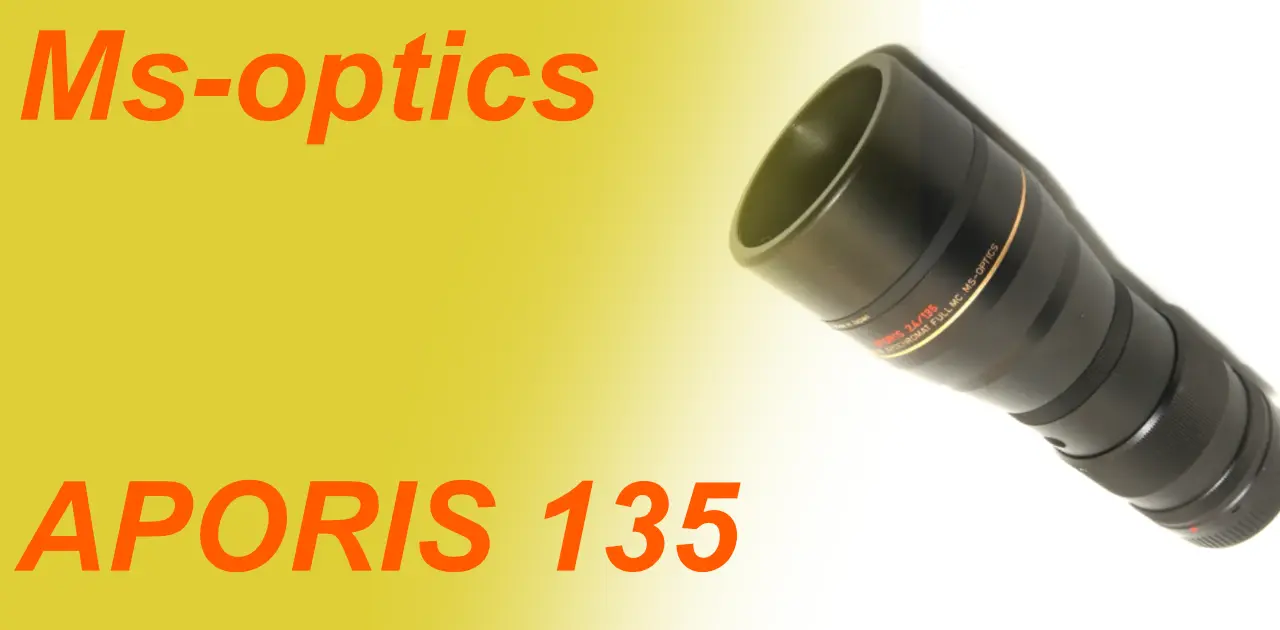
A review and photo examples using Ms-optics APORIS 135mm F2.4 with a digital camerad Photo example of the APORIS 135mm F2.4.
Table of contents
Gallery
- The sample photos were taken with a LEICA M typ240, a HASSELBLAD X2D, and a SONY NEX-6.
Review
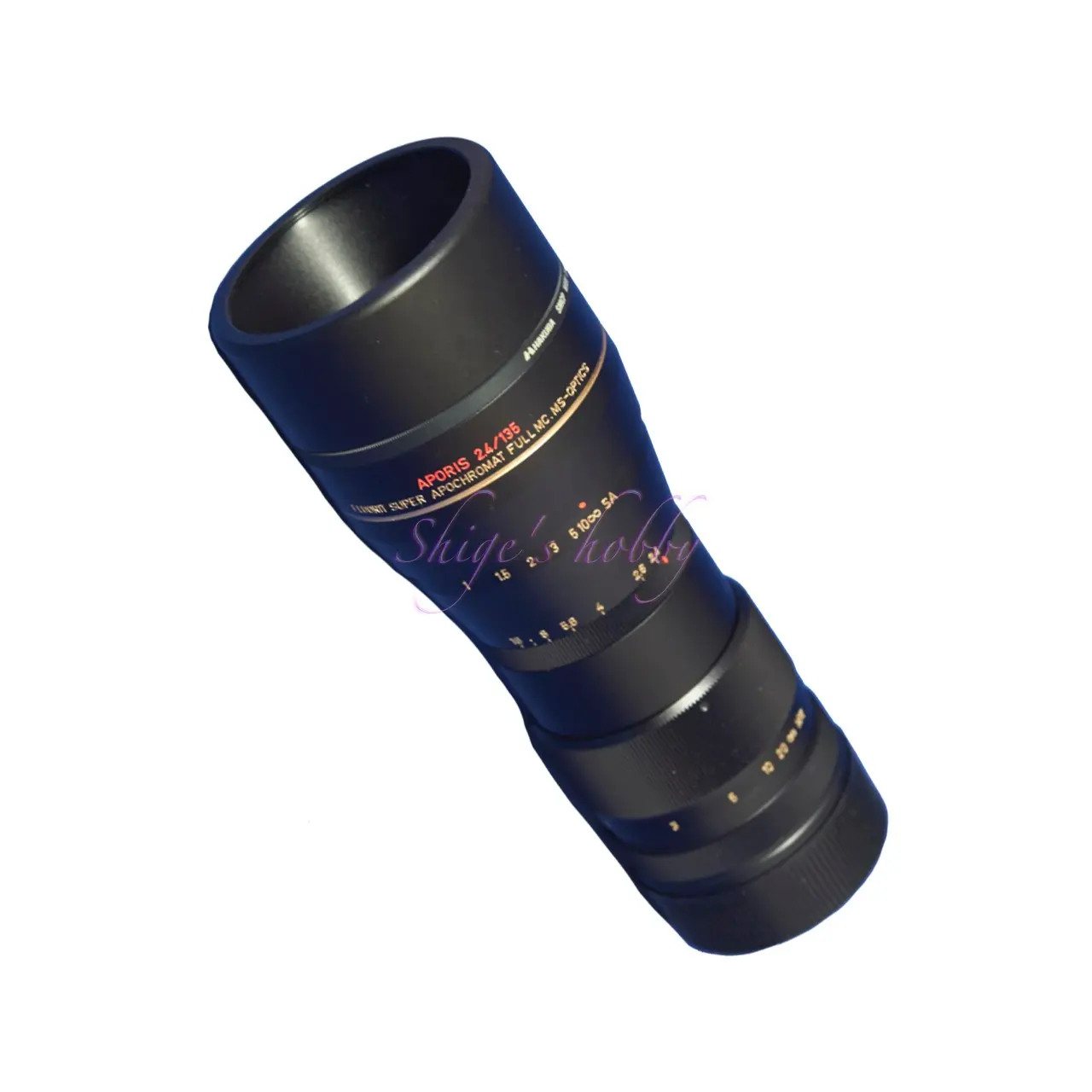
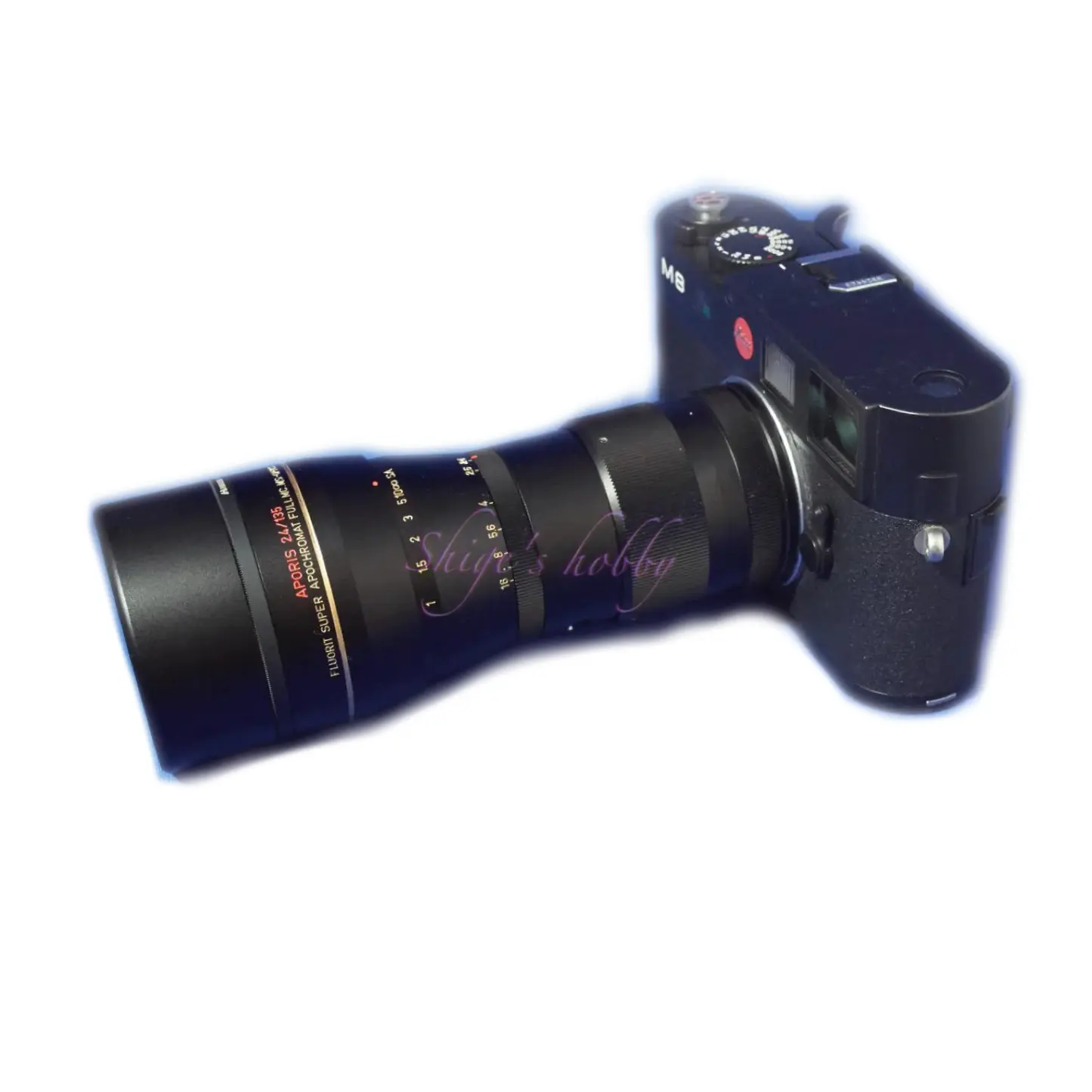
1.Overview
The APORIS 135mm F2.4 is a long-focus lens with a focal length of 135mm released by MS-Optics (Miyazaki Optical) in 2017.
The main specifications are as follows, and details are listed in the table.
- Aperture value: 2.4
- Lens construction: 4 groups, 5 elements
- Aperture blades: 16 elements
- Minimum shooting distance: 1.6m
- Leica M rangefinder camera rangefinder linkage: None
- Hood: Dedicated reverse screw, screw-in (58mm diameter)
- Filter: 58mm diameter, reverse screw-in
The lens type is a telephoto type, and uses an Ernostar type for brightness.
The lens is an apochromatic lens named after Apo, and is designed to eliminate chromatic aberration, making it a luxurious lens that uses Canon Optron’s fluorite glass in some lenses.
The lens comes with a 58mm screw-in reverse hood; to attach a filter, remove the hood and attach a 58mm filter in reverse, then attach the hood.
In addition to the released lens, a lens barrel that would work in conjunction with a rangefinder camera’s rangefinder was also planned, but it was shelved because the Leica M-type double image coincidence focus adjustment did not allow for accurate focus at full aperture, and incorporating the rangefinder linkage mechanism of a rangefinder camera near the lens mount would cause vignetting in the corners.
In addition to the Leica M-mount version, a T-mount version with a longer flange back has also been released, which can be used with various manufacturers’ SLR cameras via a T-mount adapter.
2.Usabillity
The APORIS 135mm F2.4 I own is an M-mount version, and since the M-mount version does not link with the Leica M rangefinder, I either add an EVF2, VISOFLEX, or VISOFLEX2 electronic viewfinder to an M-type digital Leica, or use a mirrorless camera.
As for the image quality, there is no problem when using it with a 35mm format, and although the entire surface of the medium-format digital sensor described below cannot be used, about 90% of the sensor can be used.
The lens is slim and has a long barrel of 200mm.
As shown in the photo, when attached to the camera, the lens looks like Pinocchio’s extended nose.
The four parts shown in the figure below are the control parts, and the focus ring, coma aberration adjustment part, aperture ring, and spherical aberration adjustment part are closest to the camera.
In terms of operability, the focus ring is wide enough to be used more, and the rotation angle is about 180 degrees up to the minimum shooting distance of 1.5m, so you can make delicate focus adjustments.
The aberration adjustment ring and aperture ring have just the right amount of torque, so you won’t make unintended adjustments while shooting.
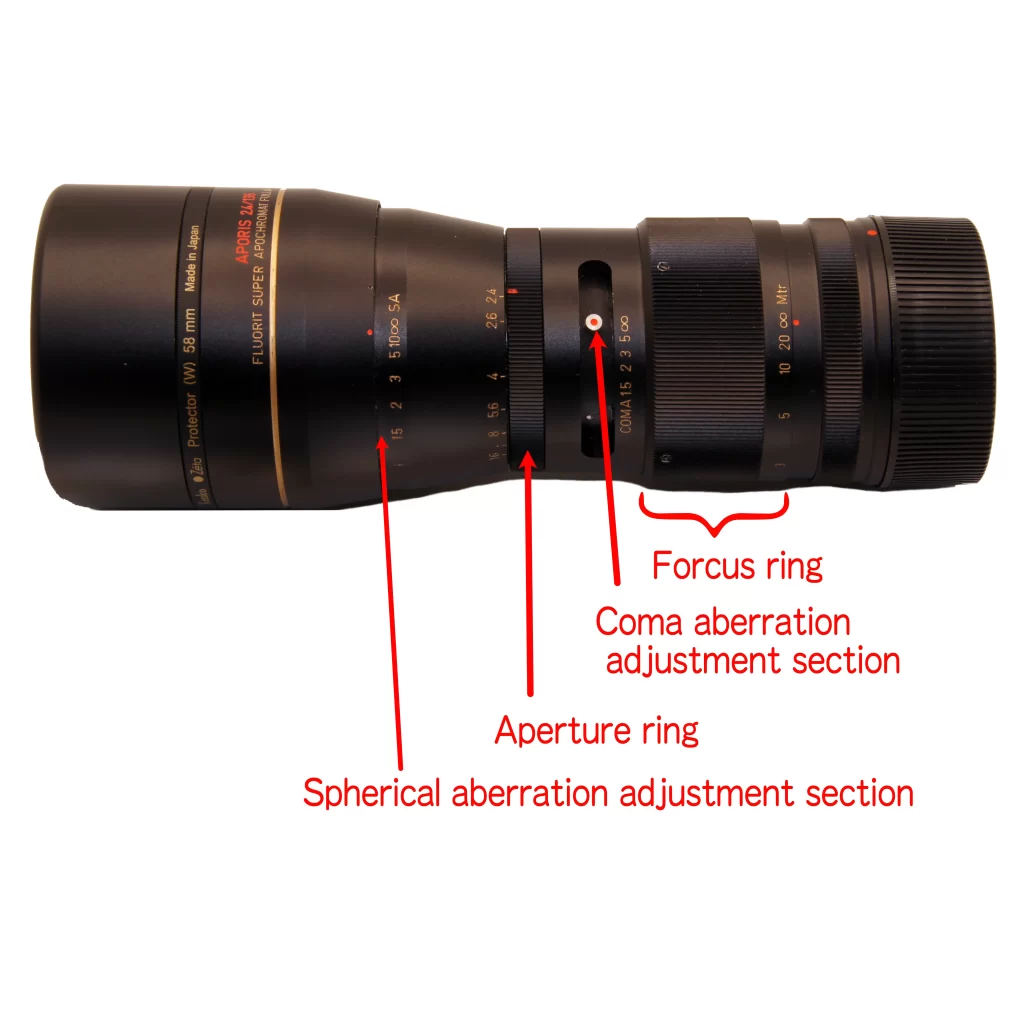
The lens was used with the EVF2 attached to the HASSELBLAD X2D, Leica SL typ601, and LEICA M Typ240. The focus position can be adjusted without any problems from the widest aperture on each electronic viewfinder.
Because the lens name includes the word “APO”, the image displayed on the EVF does not have any color bleeding around the edges of the subject, making it feel like you are looking at the subject up close.
You will probably get a similar feeling of operation with a mirrorless camera with a high-pixel EVF in the 2020s.
I remember Mr. Miyazaki saying that the fluorite glass used in the lens, Canon Optron, is very expensive. In terms of glass procurement, additional production may be difficult, so this lens may become valuable in the future if lens evaluation is reviewed.
3.Add info.
Miyazaki-style variable mechanism
This lens is equipped with a variable mechanism to control the image quality unique to Miyazaki lenses.
There are two types of Miyazaki-style variable mechanisms:
- VARIO PETZ 57mm and VARIO PRASMA 50mm have a spherical aberration (SA) variable mechanism.
- SONNETAR 50mm and SONNETAR 73mm have a coma aberration variable mechanism.
For lenses other than the VARIO PRASMA 50mm, the variable mechanism is changed by removing the lens and adjusting the position of the rear lens element, so changing the settings outdoors was hesitant due to the risk of dust getting on the sensor.
The APORIS 135mm is equipped with the two variable mechanisms mentioned above, but the lens barrel has an adjustment lever, so the variable mechanism can be operated while the lens is attached, making it easier to adjust the variable function when shooting.
This was possible because the APORIS has a generous barrel size.
Focal length: 135mm
Whether for rangefinders or SLRs, prime lenses with a focal length of 135mm have low market value.
As mentioned in the Elmarit R 135mm for Leica R mount, the main reason is that the focal length is absorbed by zoom lenses and is difficult to use for everyday photography.
The Leica Apo-Teleit M 135mm stands out among prime lenses with a focal length of 135mm. This lens maintains a high price because it is the latest 135mm lens and is not often seen on the used market because new lenses are not selling very well.
This lens also cost over 100,000 yen when it was released, and did not sell well, so it was often seen in camera stores. However, as of 2024, seven years after its release, it is no longer seen on the used market.
- The lens construction diagrams are quoted from each company’s materials, and the sizes have been adjusted by us, so they are not exact.
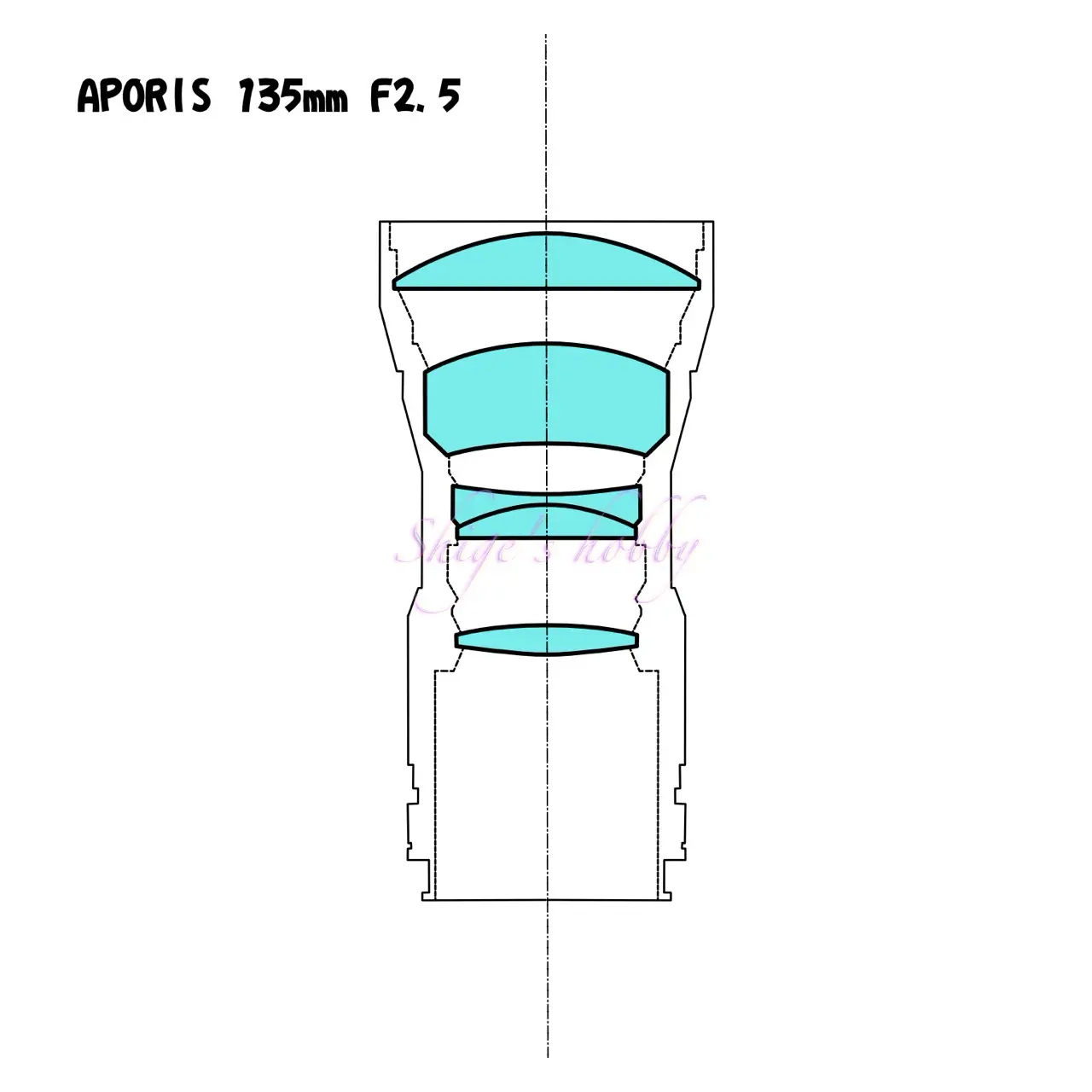
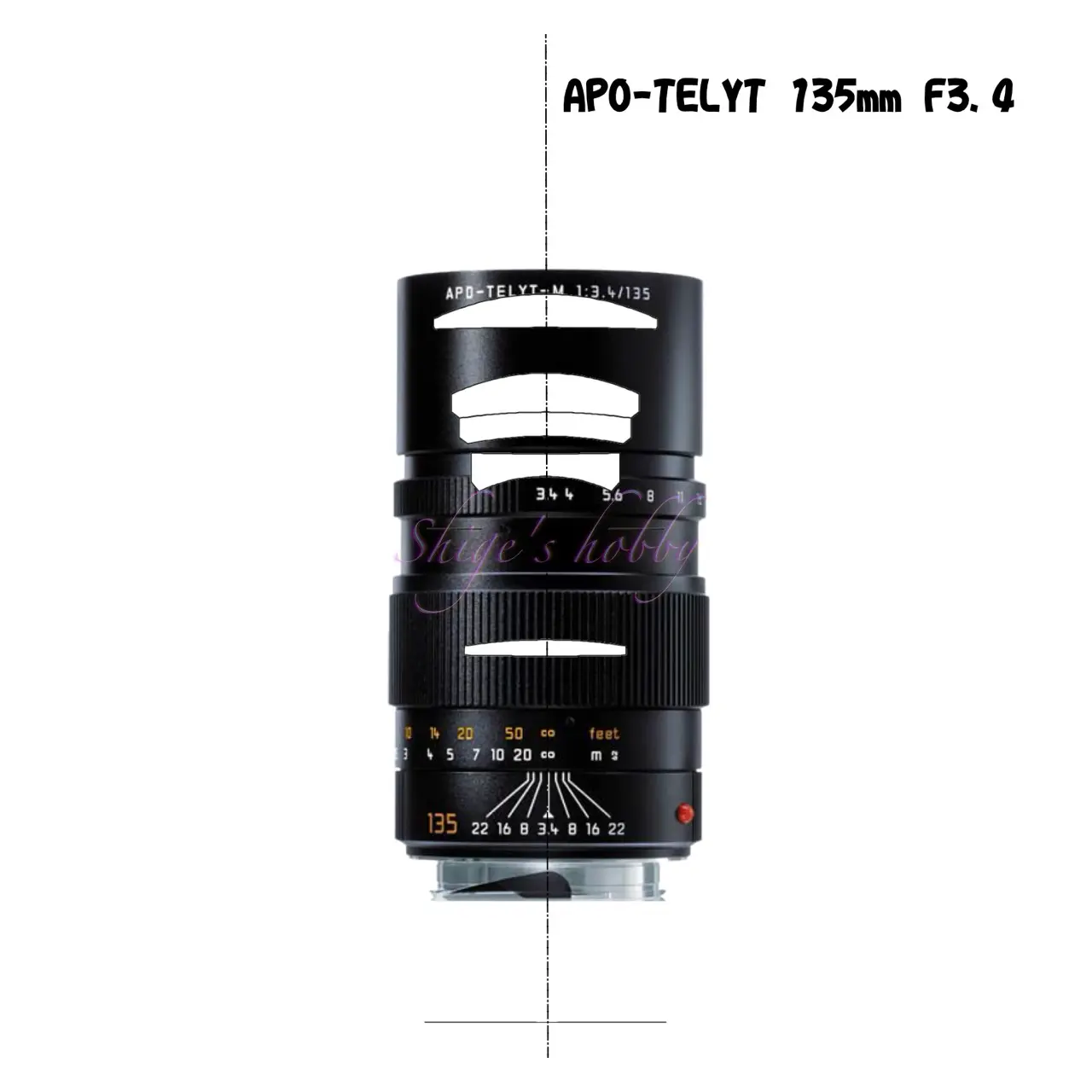
Medium format digital sensor camera
When used with a HASSELBLAD X2D, it covers approximately 90% of the 44 x 33mm sensor horizontally.
Since the X2D does not have a shutter mechanism on the camera itself, shooting is done with an electronic shutter. Shooting with an electronic shutter is very quiet but there is a possibility of rolling distortion of the subject.
Since Fujifilm’s GFX series cameras have a shutter mechanism on the camera itself, there is no need to worry about rolling distortion.
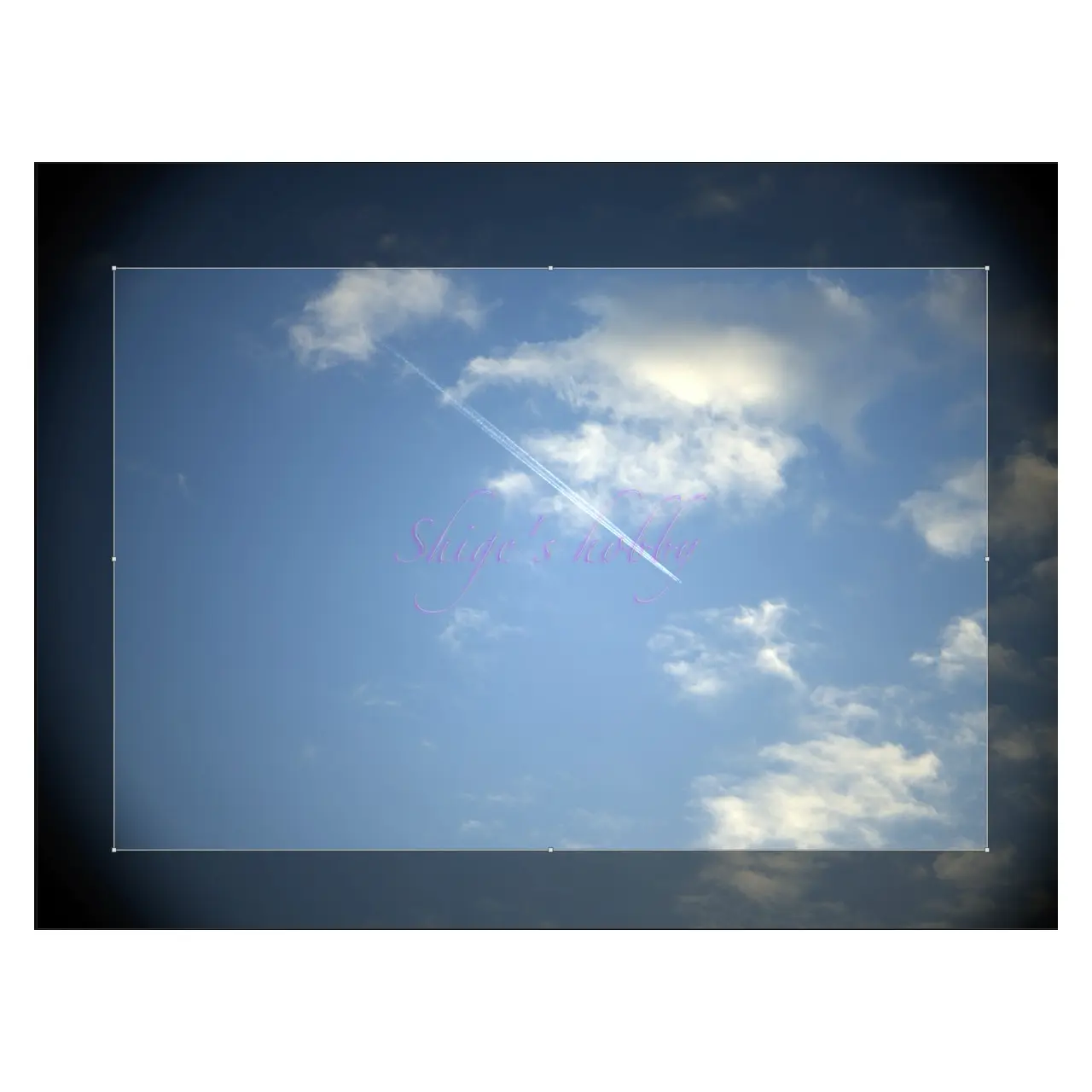

Specification and Competitor
| Item | Value | APO Telyt |
| Focal length(mm) | 135 | 135 |
| Max aperture | 2.4 | 3.4 |
| Min aperture | 16 | 22 |
| Aperture blade | 16 | 10 |
| Lens Construction | 5 elements in 4 groups | 5 elements in 4 groups |
| Min distance(m) | 1.5 | 1.5 |
| Length(mm) | 122 M mount | 104.7 M mount |
| Max diameter(mm) | 60 | 58.5 |
| Filter size(mm) | 58 | 49 |
| Weight(g) | 366(lens only) | 450 |
| フード | Dedicated cylindrical 58mm reverse thread | Build in |
| マウント | Leica M rangefinder not coupled | Leica M rangefinder coupled |
| Release date | 2017.05 | 1998 |
Reference links
Update history
- 2025.4.7
- 2024.11.11
- 2024.07.28
- 2024.03.14
- 2023.05.06

Leave a Reply